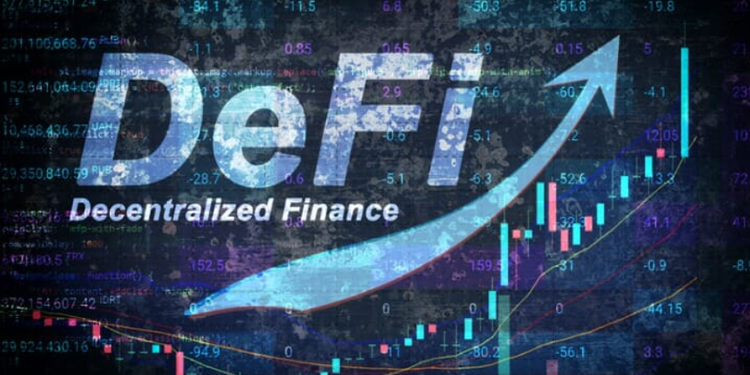Decentralized finance has struggled to provide the necessary liquidity for smooth operation to date. Decentralized exchanges (DEXs) came into action in the early years of DeFi as a remedy to centralized cryptocurrency exchanges.
The first wave of DEXs launched were an eyesore, with issues like lack of fiat conversion capability, network congestion, high transaction fees, and, most importantly, insufficient liquidity. This was understandable given the fact that the industry was still in its early stages.
Significant progress has been achieved in terms of providing the necessary liquidity for the DEX to work optimally in the DeFi business. In this article, we’ll take a look at how DEX has progressed in terms of supplying liquidity for the DeFi ecosystem over the years.
Evolution of Liquidity for Decentralized Exchanges
Many organizations in the ecosystem were able to rebuild the debt and value system to completely solve the liquidity concerns while looking for a solution to the lack of liquidity in DeFi. Newer DEXs have employed smart contracts to help bridge liquidity gaps.
The formation of liquidity pools was the most popular remedy presented.
A liquidity pool is a group of funds that are tied together by a smart contract. Liquidity pools are utilized for a variety of things, including decentralized trade and yield farming. Most decentralized exchanges now include liquidity pools as their backbone (DEX ).
To form a market, users are known as liquidity providers who add two tokens of equal value to a liquidity pool. They receive a percentage of trading fees in the pool in exchange for donating their funds, which is proportional to their part of total liquidity.
Staking and yield farming are two liquidity incentive programs that have shown to be quite effective in providing stable liquidity to DEX. Users are rewarded for using the exchange protocol in these programs.
The Role of Governance/Native Tokens in Solving Liquidity Problems
Most decentralized exchanges have created their own native exchange tokens that can be used for staking, yield farming, and other forms of financial services on their platform by utilizing the paradigm of liquidity incentives and liquidity pools. These native tokens play a crucial role in maintaining the liquidity of most DEXs and can also be utilized for DAO.
Liquidity providers can contribute an equal amount of a specific native token to the DEX liquidity pool by staking for a period of time or by yield farming. The introduction of native tokens has proven to be extremely important, and many DEX are starting to adopt this approach of producing tokens in order to provide bottomless liquidity on their platforms. YFDAI Finance was the latest to introduce their governance token, SSGT, in May of this year.
Introducing SSGT
YFDAI launched the SSGT (SafeSwap Governance Token) in keeping with their objective of becoming a full-service DeFi ecosystem that bridges the worlds of traditional financial products and decentralized networks. The main goal of SSGT’s formation is to provide bottomless liquidity on their decentralized exchange, SafeSwap, while also delivering on DAO governance to their stakeholders. YFDAI has chosen to follow in the footsteps of other DEXs such as Uniswap by developing a unique governance token with liquidity incentive programs such as staking and yield farming.
Staking SSGT provides a fixed annual percentage yield (APY) of 72 percent, which is fairly high when compared to other DEXs. In addition, cultivating SSGT for at least 60 days during YFDAI’s launchpad pre-sale rewards token holders with enhanced pre-allocation bonuses.
SSGT also adds additional important features to the YFDAI ecosystem, such as DAO governance, which allows users to vote on important YFDAI business decisions and operations.
YFDAI will be moving SafeSwap from the Ethereum network to Matic/Polygon next month. Once completed, YFDAI will start adding top projects to their exchange and begin the migration process of incentivizing liquidity providers with high rewards in SSGT for moving to SafeSwap. The project plans to add new projects on a weekly basis once live on the Matic network.
To promote SSGT adoption and scalability of their DEX, YFDAI has instituted a massive SSGT airdrop campaign that commenced on June 26th which will run through November. Even though it has kicked off, there are more airdrops that have been announcing which will be rewarding new YFDAI stakeholders as well. Airdrops of SSGT will also be used to attract LP providers and users onto the exchange.
Read also:
- https://yfdaifinance.medium.com/ssgt-in-depth-analysis-summary-and-key-takeaways-701af8ec9374
- https://yfdaifinance.medium.com/ssgt-staking-is-now-online-cb894ef19120
- https://yfdaifinance.medium.com/a-comprehensive-guide-to-ssgt-airdrops-fe7d03d273a2
Closing Thoughts
While there is still a long way to go before decentralized finance takes a significant market share of traditional, centralized finance, the urgency with which major issues like liquidity are being addressed suggests that there is no slowing this nascent industry down.
